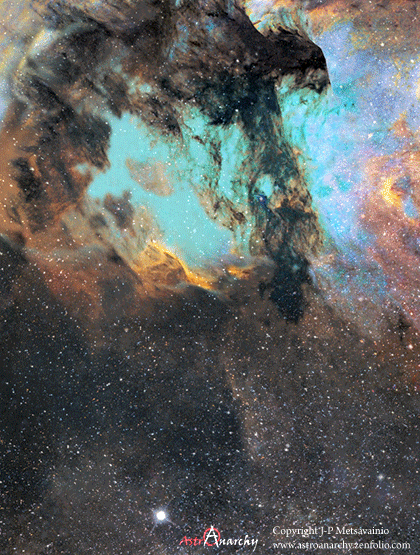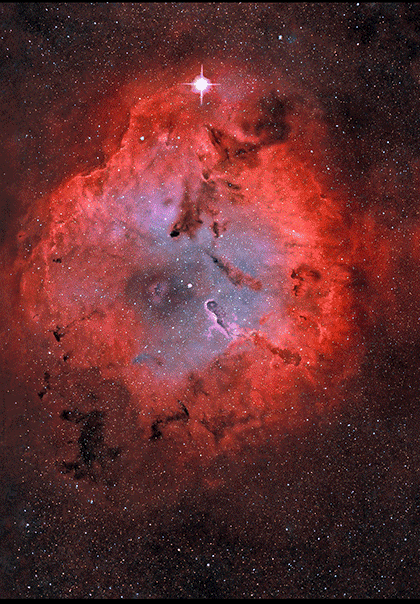Parallax 3D images use two photos captured from slightly different vantage point to create the appearance of depth. In astrophotography, however, the distance between human cameras and distance objects are so great that real parallax generally cannot be achieved.
Finnish astrophotographer J-P Metsavainio has developed a brilliant experimental technique that overcomes this (kinda): he converts astrophotographs into 3D volumetric models, and then uses those models to create dazzling 3D animations of nebulae.
Metsavainio tells us that his technique is a mixture of science and art. He first gathers specific information about the nebula in his photo prior to doing the 3D conversion. More important is the distance information of known stars, which allows him to place them at correct relative distances from one another in his resulting model.
If distance information about certain stars cannot be obtained, he falls back on a rule of thumb he has developed: “brighter is closer.” It may be a very rough approximation, but so far it has worked well. He also tell us that many shapes in a nebula can also be determined by simply studying the photos carefully. It also helps that many nebula share similar features, such as stellar wind blowing gas away from the cluster and forming an empty space around it.
How accurate the final model is, depends how much I have known and guessed right. The motivation to make those 3-D-studies is just to show, that objects in the images are not like paintings on the canvas but really three dimensional objects floating in the three dimensional space. This generally adds a new dimension to my hobby as an astronomical imager.
http://www.petapixel.com/2013/02/20/...cial-parallax/
More at his site: http://astroanarchy.zenfolio.com/
And his Blog: http://www.astroanarchy.blogspot.fi/






 Reply With Quote
Reply With Quote